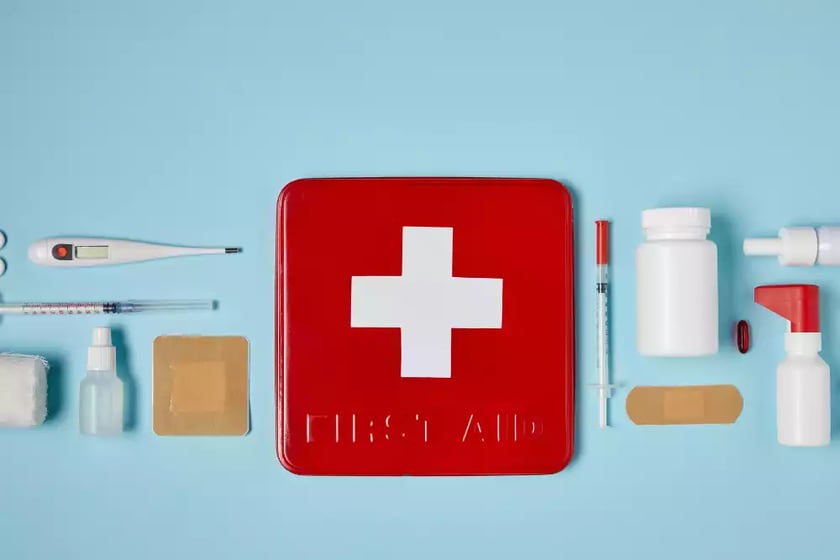By
Sam Hihn
on
Mar
19,
2025
4 min read
0 comment(s)

According to the latest data from the Bureau of Labor Statistics (BLS), private-industry employers in the U.S. reported about 2.6 million nonfatal workplace injuries and illnesses in 2023, equal to a total-recordable case rate of roughly 2.4 per 100 full-time workers — the lowest rate since the series began in 2003. (Bureau of Labor Statistics) At the same time, fatal workplace injuries were down: there were 5,283 work-related deaths in 2023, a 3.7% drop from 2022, translating to about 3.5 fatalities per 100,000 full-time equivalent workers. (Bureau of Labor Statistics) With both nonfatal and fatal injury rates persisting, a properly stocked first-aid kit remains a crucial safeguard — not only for addressing everyday accidents and minor injuries, but also as a first-response tool when serious incidents occur.
Whether treating minor injuries on-site or serving as the first response before professional medical attention arrives, a well-prepared first aid kit can make all the difference in protecting employees’ health and safety.
RELATED: Workplace Safety Laws Every Business Must Follow >>
The Occupational Safety and Health Administration (OSHA) defines first aid as immediate, one-time treatment for minor injuries. Examples outlined by OSHA include:
If treatment involves prescription medication, medical technology or a healthcare provider, it is generally no longer considered first aid under OSHA standards.
OSHA requires employers to maintain accessible workplace first aid kits with supplies suited to the specific hazards of their work environment. While OSHA does not provide a definitive list of required items, it references guidelines from the American National Standards Institute (ANSI), which establish the minimum recommended supplies.
RELATED: No More Close Calls - 5 Steps to Eliminate Slips, Trips and Falls >>
Your workplace first aid kit should reflect the level of risk associated with your industry. For example, a corporate office may require only basic supplies, while a manufacturing facility or construction site needs more comprehensive kits.
Employers in high-risk industries should consider bleeding control kits, specialized burn care supplies and additional PPE.
RELATED: Overdose Prevention in the Workplace - The Importance of Naloxone Kits >>
The number of first aid kits a workplace requires depends on three key factors:
Multi-floor or complex layouts may require multiple kits. If it takes more than 60 seconds to travel between two areas, more kits may be necessary.
The more employees in a workplace, the more first aid kits should be available.
High-risk workplaces (such as construction sites or manufacturing facilities) require more comprehensive first aid kits than low-risk environments (such as offices or retail shops).
To explore the full ANSI/ISEA Z308.1-2021 requirements—including the current minimum-supply list—consult this ANSI article, updated in March 2024.
OSHA requires first aid kits to be readily available and easily accessible—but what does that mean in practice?
For workplaces housed in a single building, employers must determine strategic locations where kits are most accessible.
Larger facilities or multiple-location organizations may need several first aid stations to comply with OSHA's accessibility standards.
One of the most common mistakes employers make is failing to restock their workplace first aid kits after supplies are used. To ensure compliance and workplace safety, companies should establish procedures that include:
A well-stocked workplace first aid kit is only effective if employees know where to find it and how to use it. Employers should provide periodic first aid training to ensure workers are prepared to respond to minor injuries and understand when professional medical care is necessary.
Let us know what you think...